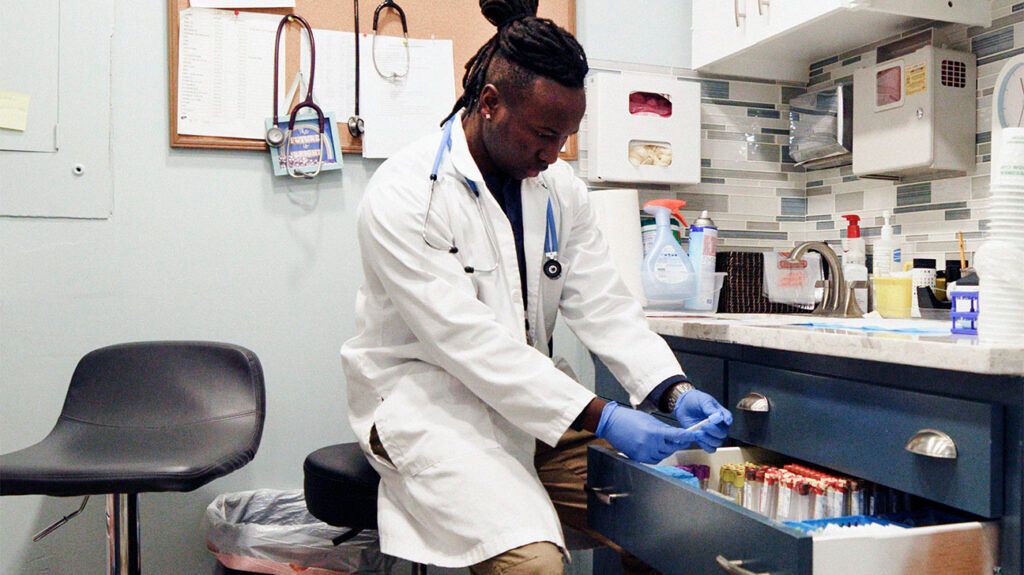Tricuspid stenosis is a heart condition where blood does not flow properly between parts of a person’s heart. It can cause mild symptoms, but may also lead to more serious complications.
Tricuspid stenosis is a condition where the opening of a person’s tricuspid valve narrows. The tricuspid valve is one of four heart valves. It helps blood flow correctly between parts of the heart.
Stenosis is a medical term that describes an unusual narrowing of a blood vessel or other bodily structure. People with tricuspid stenosis have restricted blood flow between the upper and lower right-side parts of their heart.
People with tricuspid stenosis may have mild symptoms, but can also have complications. Healthcare professionals may use surgery to treat a person’s tricuspid stenosis and reduce their risk of problems.

Tricuspid stenosis is a
The heart contains four valves that allow blood to flow through the heart in the right direction. Stenosis of the heart valves describes a narrowing of the heart valves, which can restrict blood flow.
The tricuspid valve sits between a person’s lower right heart chamber and their upper right heart chamber. These chambers are known as the right ventricle and right atrium. The tricuspid valve helps blood to flow from the right atrium to right ventricle. It also stops blood flowing backward.
A person with tricuspid stenosis has a narrowed tricuspid valve opening. This
- heart palpitations, feelings of having a fluttering or pounding heart
- fluttering discomfort in a person’s neck
- swelling in a person’s legs
- having cold skin
- feeling tired or generally weak
- loss of appetite and weight loss
- a feeling of running out of air, and not being able to breathe fast or deeply enough during physical activity
- loss of consciousness during or immediately after physical activity
Complications from tricuspid stenosis can include:
- atrial fibrillation, an irregular and often fast heartbeat
- heart failure
- liver failure
- infective endocarditis, an inflammation of the inner lining of a person’s heart normally
resulting from bacteria
However, healthcare professionals can minimize a person’s risk of these complications with early treatment and monitoring.
A common
Other and rare causes of tricuspid stenosis
- infective endocarditis
- damage during:
- surgery to implant a pacemaker
- heart biopsies, a surgical procedure where healthcare professionals take a small sample of a person’s heart muscle tissue for testing
- systemic lupus erythematosus, a condition that affects a person’s immune system, also known as lupus
- antiphospholipid antibody syndrome, a condition where a person’s immune system creates antibodies that
attack their own body - heart tumors
- chest radiation during some cancer treatments
- metabolic conditions such as Fabry and Whipple diseases, which affect how a person’s body breaks down food
In very
People with tricuspid stenosis may have subtle symptoms or symptoms that overlap with other heart conditions. Healthcare professionals, therefore, can use a variety of testing and scans to accurately diagnose tricuspid stenosis. These
- echocardiogram, which is a type of ultrasound scan that shows the heart and nearby blood vessels
- laboratory tests, including:
- metabolic panels to measure several aspects of a person’s blood
- arterial blood gas tests, which measure the amount of oxygen and carbon dioxide in a person’s blood
- chest X-rays
- electrocardiogram (ECG) to record electrical activity in the heart
- jugular venous pulse tracing to measure pressure inside the heart
- cardiac catheterization, which is when a doctor inserts a long, flexible tube into a person’s heart to take measurements or samples
If a person’s tricuspid stenosis is
Surgeons
Healthcare professionals may also use medication such as loop diuretics to help
A person’s tricuspid valve helps blood to flow correctly from the right atrium to the right ventricle. If a person has tricuspid stenosis, their tricuspid valve narrows. They then have reduced blood flow through their heart.
The most common cause of tricuspid stenosis is valve damage resulting from rheumatic fever. A person with tricuspid stenosis may have several symptoms, usually mild. They can, however, also develop more serious complications, including heart failure.
If a person’s tricuspid stenosis is severe, healthcare professionals will usually use surgery to repair or replace their tricuspid valve. They may also be able to use medication to help relieve symptoms.
